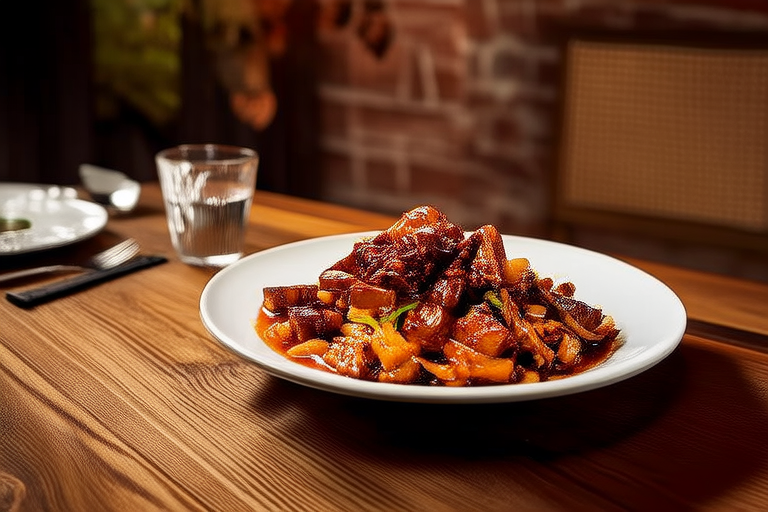Global Palates: Discovering Local Delights on Your Next Trip

“`html
Global Palates: Discovering Local Delights on Your Next Trip
Introduction
Traveling is not just about visiting new places; it’s about immersing oneself in the rich tapestry of cultures that make each destination unique. One of the most rewarding aspects of travel is discovering the local cuisine—its flavors, ingredients, and preparation methods that tell stories of history, tradition, and community. By embracing global palates, travelers can deepen their connection to the places they visit and gain a more profound appreciation for the diversity of human experience.
Food is central to every culture, serving as both sustenance and symbol. It reflects the values, beliefs, and daily lives of people around the world. Through the lens of culinary exploration, travelers can uncover the hidden gems of a destination and forge meaningful connections with the locals.
Why Food is Central to Travel Experiences
Food serves as a bridge between travelers and local communities, offering a tangible way to engage with the culture. Whether savoring street food at a bustling market or sharing a meal with a family in their home, eating together fosters a sense of belonging and shared humanity. Each dish tells a story, often rooted in centuries of tradition, and offers a glimpse into the social and economic fabric of the region.
Cooking techniques, ingredients, and even table manners vary widely across cultures, providing insight into the historical context and lifestyle of the people. From the communal feasts of Mediterranean countries to the individualistic dining habits of Japan, food is a powerful medium for storytelling and preserving cultural heritage.
Exploring Local Cuisines Around the World
Asia
In Asia, culinary diversity is vast and varied. In Japan, sushi and ramen are iconic dishes, but don’t overlook the regional specialties like kaiseki, a multi-course meal celebrating seasonal ingredients. Thailand offers an explosion of flavors, with dishes like pad thai, green curry, and mango sticky rice. Meanwhile, India boasts a wide array of spices and curries, from mild to fiery, served with flatbreads and rice. In Vietnam, pho and banh mi are must-try street foods, while China’s dim sum and Peking duck showcase the art of dumpling-making and roasting.
Europe
European cuisine ranges from hearty stews to delicate pastries. Italy’s pasta and pizza are globally renowned, but lesser-known delights include osso buco (veal shanks) and tiramisu. Spain offers tapas, paella, and churros, while France is famous for its cheeses, coq au vin, and croissants. In Greece, souvlaki, moussaka, and baklava are staples, while Germany’s bratwurst and pretzels reflect its rich beer culture.
Africa
African cuisine is a melting pot of influences, from indigenous ingredients to colonial and post-colonial additions. In Ethiopia, injera (a sourdough flatbread) accompanies dishes like doro wat (spicy chicken stew). Morocco’s tagine, couscous, and harissa provide a flavorful introduction to North African cuisine. South Africa’s bobotie (spiced minced meat baked with an egg-based topping) and biltong (dried meat) are quintessential dishes.
The Americas
The Americas offer a range of flavors from spicy to sweet. Mexico’s tacos al pastor and mole poblano are beloved, while Brazil’s feijoada (black bean stew) and pão de queijo (cheese bread) are unique. In the United States, barbecue and soul food are deeply rooted in regional traditions. Peru’s ceviche and quinoa dishes highlight the Andean influence, while Argentina’s asado (barbecue) showcases its beef-centric culture.
Oceania
Oceania’s culinary landscape is shaped by its geography and indigenous populations. Australia’s meat pies and Vegemite sandwiches are familiar, but lesser-known treats like lamingtons (cakes coated in chocolate and coconut) and pavlova (meringue-based dessert) are worth seeking out. New Zealand’s hangi (an earth oven used to cook meats and vegetables) and whitebait fritters offer a taste of the country’s Maori heritage.
Tips for Engaging with Local Cuisine
Approaching new foods with an open mind and respect for local customs is key to enjoying culinary adventures. When trying unfamiliar dishes, take small bites and allow yourself to adjust to new flavors. Be mindful of dining etiquette, which may differ from what you’re accustomed to.
To find authentic eateries, ask locals for recommendations or consult trusted travel guides. Street food stalls, local markets, and family-owned restaurants often offer the best insights into regional cuisine. Additionally, consider taking cooking classes to learn firsthand about traditional recipes and techniques.
Health Considerations and Cultural Sensitivity
When traveling, it’s important to be aware of potential health risks associated with unfamiliar foods. Always ensure that food is properly cooked and water is safe to drink. If you have dietary restrictions, inform your hosts or restaurant staff in advance.
Respecting local customs is equally crucial. Some cultures have specific dietary practices or religious restrictions, so be sensitive to these when dining. Showing appreciation for the effort put into preparing the meal and engaging in conversation with your hosts can foster deeper connections and enhance your travel experience.
Conclusion
Exploring local cuisines enriches travel experiences by offering a window into the heart of a destination. From the bustling streets of Bangkok to the serene vineyards of Tuscany, food provides a common language that transcends borders. As you embark on your next adventure, embrace the opportunity to discover new flavors and traditions. Let your global palate guide you toward unforgettable culinary experiences that will stay with you long after your trip ends.
So, pack your bags, open your mind, and prepare to savor the world one bite at a time. Who knows? You might just find your new favorite dish along the way!
“`